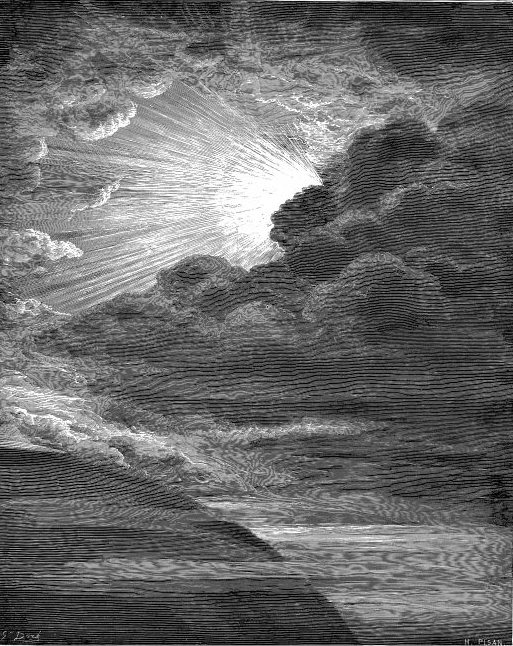|
Noise Print
A noise print is part of a technique used in noise reduction. A noise print is commonly used in audio mastering to help reduce the effects of unwanted noise from a piece of audio. In this case, the noise print would be a recording of the ambient noise in the room, which is then used in spectral subtraction to set multiple expanders, effectively gating out those frequencies whilst the signal level in that band is lower than that in the noise print. Many plugins for studio software can be used to apply noise reduction in this way. Noise reduction usually results in unwanted artifacts, sometimes referred to as "twittering" or "birdies". Different algorithms for noise reduction control these artifacts with varying levels of success. See also * Dark frame Darkness, the direct opposite of lightness, is defined as a lack of lighting, illumination, an absence of visible spectrum, visible light, or a surface that absorbs light, such as black or brown. Human visual perception, vis ... [...More Info...] [...Related Items...] OR: [Wikipedia] [Google] [Baidu] |
Noise Reduction
Noise reduction is the process of removing noise from a signal. Noise reduction techniques exist for audio and images. Noise reduction algorithms may distort the signal to some degree. Noise rejection is the ability of a circuit to isolate an undesired signal component from the desired signal component, as with common-mode rejection ratio. All signal processing devices, both analog and digital, have traits that make them susceptible to noise. Noise can be random with an even frequency distribution (white noise), or frequency-dependent noise introduced by a device's mechanism or signal processing algorithms. In electronic systems, a major type of noise is ''hiss'' created by random electron motion due to thermal agitation. These agitated electrons rapidly add and subtract from the output signal and thus create detectable noise. In the case of photographic film and magnetic tape, noise (both visible and audible) is introduced due to the grain structure of the medium. In photog ... [...More Info...] [...Related Items...] OR: [Wikipedia] [Google] [Baidu] |
Audio Mastering
Mastering, a form of audio post production, is the process of preparing and transferring recorded audio from a source containing the final mix to a data storage device (the master), the source from which all copies will be produced (via methods such as pressing, duplication or replication). In recent years digital masters have become usual, although analog masters—such as audio tapes—are still being used by the manufacturing industry, particularly by a few engineers who specialize in analog mastering. Mastering requires critical listening; however, software tools exist to facilitate the process. Results depend upon the intent of the engineer, the skills of the engineer, the accuracy of the speaker monitors, and the listening environment. Mastering engineers often apply equalization and dynamic range compression in order to optimize sound translation on all playback systems. It is standard practice to make a copy of a master recording—known as a safety copy—in c ... [...More Info...] [...Related Items...] OR: [Wikipedia] [Google] [Baidu] |
Noise Gate
A noise gate or gate is an electronic device or software that is used to control the volume of an audio signal. Comparable to a compressor, which attenuates signals ''above'' a threshold, such as loud attacks from the start of musical notes, noise gates attenuate signals that register ''below'' the threshold. However, noise gates attenuate signals by a fixed amount, known as the range. In its simplest form, a noise gate allows a main signal to pass through only when it is above a set threshold: the gate is "open". If the signal falls below the threshold, no signal is allowed to pass (or the signal is substantially attenuated): the gate is "closed". A noise gate is used when the level of the "signal" is above the level of the unwanted "noise". The threshold is set above the level of the "noise", and so when there is no main "signal", the gate is closed. A common application is with electric guitar to remove hum and hiss noise caused by distortion effects units. A noise gate doe ... [...More Info...] [...Related Items...] OR: [Wikipedia] [Google] [Baidu] |
Audio Plug-in
An audio plug-in, in computer software, is a plug-in that can add or enhance audio-related functionality in a computer program. Such functionality may include digital signal processing or sound synthesis. Audio plug-ins usually provide their own user interface, which often contains GUI widgets that can be used to control and visualise the plug-in's audio parameters. Types There are three broad classes of audio plug-in: those which transform existing audio samples, those which generate new audio samples through sound synthesis and those which analyze existing audio samples. Although all plug-in types can technically perform audio analysis, only specific formats provide a mechanism for analysis data to be returned to the host. Instances The program used to dynamically load audio plug-ins is called a plug-in host. Example hosts include Bidule, Gig Performer, Mainstage, REAPER and Sonic Visualiser. Plug-ins can also be used to host other plug-ins. Communication between host ... [...More Info...] [...Related Items...] OR: [Wikipedia] [Google] [Baidu] |
Compression Artifact
A compression artifact (or artefact) is a noticeable distortion of media (including images, audio, and video) caused by the application of lossy compression. Lossy data compression involves discarding some of the media's data so that it becomes small enough to be stored within the desired disk space or transmitted (''streamed'') within the available bandwidth (known as the data rate or bit rate). If the compressor cannot store enough data in the compressed version, the result is a loss of quality, or introduction of artifacts. The compression algorithm may not be intelligent enough to discriminate between distortions of little subjective importance and those objectionable to the user. The most common digital compression artifacts are DCT blocks, caused by the discrete cosine transform (DCT) compression algorithm used in many digital media standards, such as JPEG, MP3, and MPEG video file formats. These compression artifacts appear when heavy compression is applied, and occu ... [...More Info...] [...Related Items...] OR: [Wikipedia] [Google] [Baidu] |
Dark Frame
Darkness, the direct opposite of lightness, is defined as a lack of lighting, illumination, an absence of visible spectrum, visible light, or a surface that absorbs light, such as black or brown. Human visual perception, vision is unable to distinguish colors in conditions of very low luminance. This is because the hue sensitive photoreceptor cells on the retina are inactive when light levels are insufficient, in the range of visual perception referred to as scotopic vision. The emotional response to darkness has generated metaphorical usages of the term in many cultures, often used to describe an unhappy or foreboding feeling. Referring to a time of day, night, complete darkness occurs when the Sun is more than 18° below the horizon, without the effects of twilight on the night sky. Scientific Perception The perception of darkness differs from the mere absence of light due to the effects of afterimage, after images on perception. In perceiving, the eye is active, and the p ... [...More Info...] [...Related Items...] OR: [Wikipedia] [Google] [Baidu] |
Audio Engineering
Audio most commonly refers to sound, as it is transmitted in signal form. It may also refer to: Sound *Audio signal, an electrical representation of sound *Audio frequency, a frequency in the audio spectrum * Digital audio, representation of sound in a form processed and/or stored by computers or digital electronics *Audio, audible content (media) in audio production and publishing *Semantic audio, extraction of symbols or meaning from audio *Stereophonic audio, method of sound reproduction that creates an illusion of multi-directional audible perspective *Audio equipment Entertainment *AUDIO (group), an American R&B band of 5 brothers formerly known as TNT Boyz and as B5 * ''Audio'' (album), an album by the Blue Man Group * ''Audio'' (magazine), a magazine published from 1947 to 2000 *Audio (musician), British drum and bass artist * "Audio" (song), a song by LSD Computing *, an HTML element, see HTML5 audio See also *Acoustic (other) *Audible (other) *Au ... [...More Info...] [...Related Items...] OR: [Wikipedia] [Google] [Baidu] |




